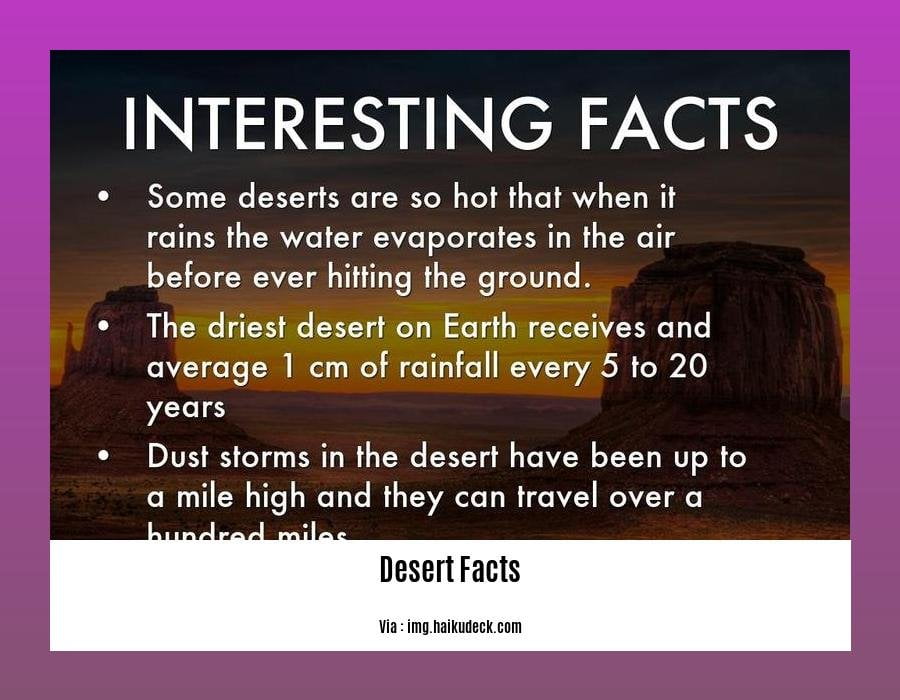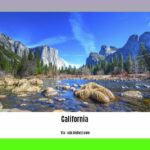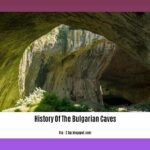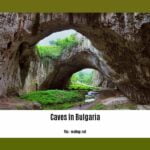Embark on a captivating journey through the intriguing world of the California desert in our article titled “Exploring the Hidden Treasures: Fascinating CA Desert Facts Revealed.” Delve into the depths of this often misunderstood landscape as we uncover an array of captivating information about the geological formations, unique climate patterns, and the extraordinary adaptations of the flora and fauna that call this desert home. Join us as we unveil the secrets of this remarkable region and shed light on the awe-inspiring wonders that await discovery.
Key Takeaways:
- The Mojave Desert in California covers over 20 million acres and is known for its vastness and diversity.
- Death Valley is the second-largest national park in California and is famous for its extreme temperatures, sitting 282 feet below sea level.
- The Great Basin Desert extends through eastern California and Nevada, featuring mountain ranges like the White Mountains and Ruby Mountains.
- The Great Chihuahuan Desert spans two countries, the US and Mexico, and is characterized by hot summer temperatures and sand dunes surrounded by mountains.
- Anza-Borrego State Park in California offers diverse landscapes within the desert region.
- The Salton Sea, located in the Sonoran Desert, is home to a unique ecosystem and remarkable biodiversity.
CA Desert Facts
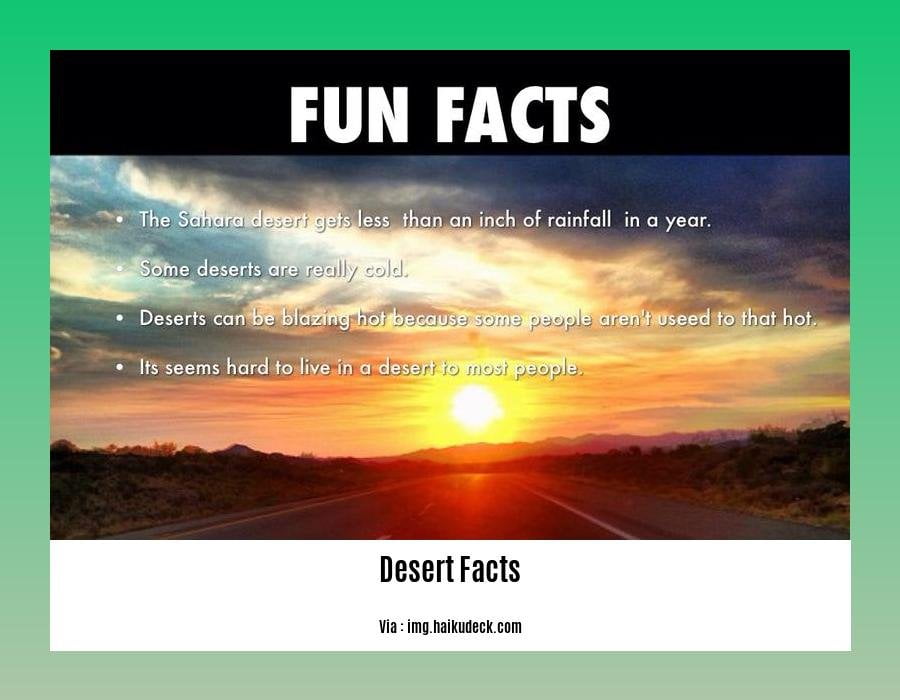
The California desert is a captivating region filled with hidden treasures and fascinating facts. From its vast landscapes to unique geological formations, this desert offers a wealth of natural wonders to explore. Let’s dive into some interesting facts about the CA desert and uncover its secrets.
The Mojave Desert
Covering over 20 million acres, the Mojave Desert is a stunning expanse of land that spans across California, Nevada, Utah, and Arizona. With its diverse ecosystems and unique geological features, it is a playground for exploration and discovery.
Did you know?
– The Mojave Desert is home to the Joshua Tree National Park, famous for its iconic Joshua trees. These peculiar-looking trees are not trees at all but rather a species of yucca plants.
– Death Valley, located in the Mojave Desert, holds the record for the hottest temperature ever recorded on Earth: 134 degrees Fahrenheit (56.7 degrees Celsius).
– The Mojave Desert is known for its vast network of underground aquifers, which serve as crucial water sources for both wildlife and human communities.
The Great Basin Desert
Stretching through parts of eastern California and Nevada, the Great Basin Desert is a mesmerizing landscape with its mountain ranges and unique flora and fauna. It is an exceptional region to explore for nature enthusiasts and adventure seekers alike.
Interesting facts:
– The Great Basin Desert is home to the Bristlecone Pine, recognized as the oldest living tree species on Earth. Some of these ancient trees have surpassed 5,000 years in age!
– This desert is called the “Cold Desert” due to its high elevation and lower average temperatures compared to other deserts.
– The Great Basin Desert features remarkable mountain ranges such as the White Mountains and the Ruby Mountains, offering breathtaking vistas and hiking opportunities.
The Chihuahuan Desert
Spanning across two countries, the United States and Mexico, the Chihuahuan Desert is a unique and diverse ecosystem. With its hot summer temperatures and sand dunes surrounded by mountains, it offers a distinct experience for adventurers and nature lovers.
Here are some amazing facts:
– The Chihuahuan Desert is home to approximately 3,600 species of plants, making it one of the most biologically diverse deserts in the world.
– It houses several national parks, including Big Bend National Park in Texas and Organ Mountains-Desert Peaks National Monument in New Mexico.
– The Chihuahuan Desert is known for its stunning displays of wildflowers during the spring season, transforming the seemingly arid landscape into a vibrant tapestry of colors.
Anza-Borrego State Park
Situated in California’s desert region, Anza-Borrego State Park is a hidden gem offering diverse landscapes and unique geological formations. From rugged canyons to expansive desert plains, this park is a paradise for outdoor enthusiasts and nature photographers.
- Anza-Borrego State Park is the largest state park in California, covering approximately 600,000 acres.
- The park is home to stunning wildflower blooms, attracting visitors from far and wide during the peak season.
- It boasts incredible landmarks such as Font’s Point, a mesmerizing viewpoint that offers a panoramic vista of the desert floor and surrounding badlands.
The Salton Sea
Part of the Sonoran Desert, the Salton Sea is a striking natural wonder in California. Known for its unique ecosystem and biodiversity, it holds a captivating allure for both scientists and nature enthusiasts.
Take note of these intriguing facts:
– The Salton Sea is the largest lake in California, covering about 376 square miles. It was accidentally created in 1905 when the Colorado River flooded and breached an irrigation canal.
– It attracts a variety of migratory birds, making it a paradise for birdwatching and bird photography.
– The Salton Sea faces various environmental challenges due to water management issues, which have led to increased salinity levels and declining habitats for wildlife.
In conclusion, the California desert is a region brimming with wonders waiting to be explored. From the vast stretches of the Mojave Desert to the unique ecosystems of the Great Basin and Chihuahuan Deserts, there is always something new to discover. Whether you are fascinated by geological formations, curious about desert flora and fauna, or simply seeking adventure in remote landscapes, the CA desert offers an unforgettable experience. So, pack your bags, embrace the spirit of exploration, and embark on a journey into the hidden treasures of the CA desert.
Table:
| Desert Region | Key Features |
|---|---|
| Mojave Desert | – Joshua Tree National Park – Death Valley |
| Great Basin Desert | – Bristlecone Pines – White Mountains |
| Chihuahuan Desert | – Big Bend National Park – Wildflower blooms |
| Anza-Borrego State Park | – Largest state park in California – Font’s Point |
| Salton Sea | – Largest lake in California – Migratory bird habitat |
If you’re craving some fascinating Bondi Beach history facts, discover them here: bondi beach history facts. Dive into the intriguing stories of this iconic Australian beach destination.
Climate Patterns and Extremes
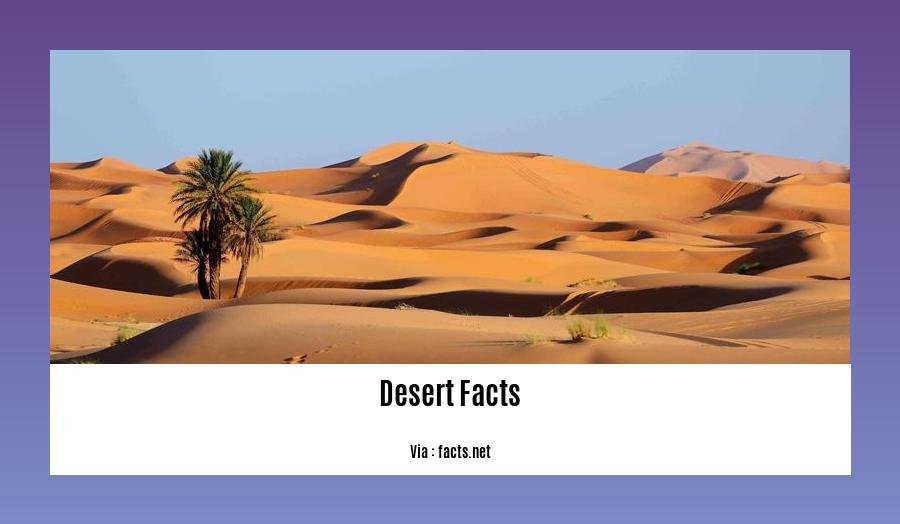
The California desert is a region that experiences unique climate patterns and extremes. From scorching temperatures to freezing cold nights, this captivating landscape is a testament to the wonders of nature. Let’s delve into the fascinating climate characteristics of this region.
Hot Arid Climate: Akin to the Sahara Desert
One noteworthy climate pattern in the southeastern regions of California is its hot arid climate, which is similar to that of the Sahara Desert. The arid conditions, characterized by low rainfall and high evaporation rates, create a harsh environment for both flora and fauna.
Death Valley: A Hotspot for Extreme Temperatures
When it comes to extreme temperatures, Death Valley in the Mojave Desert takes the crown. This arid wonderland has recorded some of the highest temperatures on Earth, with summer temperatures regularly surpassing a scorching 120 °F (49 °C). It’s a place where the air feels like fire, and one must be prepared to endure the searing heat.
Winter Chills in the Sierra Nevada
While the deserts of California are known for their scorching heat, the climate patterns also bring about extreme temperature drops in certain areas. The Sierra Nevada, with its majestic mountain ranges, can experience freezing temperatures during winter. The chilly air and snow-capped peaks contrast starkly with the desert landscapes, showcasing the incredible diversity of the region.
Averaging in LA: Mid-60s and a Touch of Rain
Moving away from the extremes, let’s explore the climate patterns in Los Angeles. The average annual temperature in the city hovers around the comfortable mid-60s F (about 18 °C). While the desert heat may seem far away, California’s deserts impact the climate in this metropolitan area. However, rainfall is relatively scarce, with an average annual precipitation of about 14 inches (350 mm).
Wildflower Blooms: Beauty After the Storm
One of the most astonishing aspects of the California deserts is their ability to transform after winter rains. Despite the harsh conditions, these arid lands can experience spectacular wildflower blooms. The barren desert floor suddenly bursts into vibrant hues, as if nature is sending a reminder of its resilience and beauty.
The Mojave Desert’s Special Resident: The Desert Tortoise
Amidst the captivating climate patterns, it’s important to highlight the unique wildlife adaptations found in California’s desert ecosystems. The Mojave Desert is home to the threatened desert tortoise, a species that has learned to survive in this rugged environment. These resilient reptiles have evolved to conserve water and seek refuge from the extreme temperatures, further highlighting the remarkable adaptations of desert fauna.
The Salton Sea: A Saline Marvel
No discussion of the California desert would be complete without mentioning the Salton Sea. This large saline lake, located in the Colorado Desert, holds its own fascination. Facing environmental challenges, the Salton Sea still showcases the wonders of nature, attracting a diverse range of bird species and captivating visitors who are drawn to its unique beauty.
Key Takeaways:
- The southeastern regions of California have a hot arid climate, similar to the Sahara Desert.
- Death Valley, located in the Mojave Desert, has recorded temperatures among the highest in the world, with summer temperatures surpassing 120 °F (49 °C).
- Winter temperatures in the Sierra Nevada can drop to near freezing.
- The average annual temperature in Los Angeles is in the mid-60s F (about 18 °C), with an annual precipitation average of about 14 inches (350 mm).
- Despite the harsh conditions, California’s deserts experience spectacular wildflower blooms after winter rains.
- The desert tortoise is a threatened species that inhabits the Mojave Desert.
- The Salton Sea is a large saline lake located in the Colorado Desert.
[Sources]
1. britannica.com
2. [wikipedia.org](en.wikipedia.org/wiki/Climate_of_California
Rare and Unique Flora and Fauna
The California desert region is not only a captivating and awe-inspiring landscape, but it is also home to a remarkable array of rare and unique flora and fauna. Despite the arid conditions and scorching temperatures, this region hosts a diverse range of plant and animal species that have adapted to survive in this challenging environment. Let’s take a closer look at some of the fascinating flora and fauna that call the California desert their home.
Flora: Surviving Against All Odds
The rare and unique flora of the California desert has evolved extraordinary adaptations to thrive in the harsh desert environment. These plants have developed remarkable survival strategies, such as drought tolerance, water storage mechanisms, and specialized root systems.
One example of rare flora in the California desert is the Joshua Tree (Yucca brevifolia). This iconic plant can be found in the Mojave Desert and is well-known for its unique appearance, with its branches resembling outstretched arms. These trees can live for hundreds of years and play a crucial role in the desert ecosystem, providing shelter and food for various animals.
Another remarkable plant is the Desert Marigold (Baileya multiradiata), which blooms with vibrant yellow flowers. Despite the scarcity of water, the Desert Marigold has developed long taproots to reach underground water sources, ensuring its survival in the arid environment.
Fauna: Life in the Desert Heat
The California desert is teeming with rare and unique fauna that have adapted to the extreme conditions of this arid region. From reptiles and mammals to birds and insects, the desert is home to a diverse range of animal species.
One of the most characteristic animals found in the California desert is the Desert Tortoise (Gopherus agassizii). This threatened species primarily inhabits the Mojave Desert and has evolved a tough shell and the ability to store water in its bladder, allowing it to withstand the desert’s harsh conditions.
The Desert Bighorn Sheep (Ovis canadensis) is another iconic resident of the California desert. These magnificent creatures have adapted to the rugged terrain, with their specialized hooves providing stability on rocky slopes. Their ability to survive in the arid landscape showcases their remarkable resilience.
Key Takeaways:
- The California desert is home to a variety of rare and unique flora and fauna.
- The Joshua Tree and Desert Marigold are examples of rare flora in the desert, showcasing their impressive adaptations for survival.
- The Desert Tortoise and Desert Bighorn Sheep are iconic animal species that have evolved to thrive in the desert’s challenging conditions.
Sources:
– Wikipedia – Joshua Tree
– DesertUSA – Desert Flora
Famous landmarks and natural wonders
The California desert region is a captivating and awe-inspiring landscape that encompasses a wide array of famous landmarks and natural wonders. From unique geological formations to vibrant ecosystems, this region offers an abundance of remarkable sights and experiences. Let’s dive into the hidden treasures and fascinating facts about some of the most renowned features of the California desert.
The Majestic Joshua Tree: An Icon of the Desert
One of the most famous landmarks in the California desert is the iconic Joshua Tree. Known by its scientific name Yucca brevifolia, this unique yucca species thrives in the arid desert environment. With its distinct shape and rugged beauty, the Joshua Tree has become a symbol of the region’s natural wonders.
Death Valley: The Hottest Place on Earth
Another remarkable feature of the California desert is Death Valley, which holds the title for being the hottest place on Earth. With temperatures that can exceed 100°F, Death Valley is an extreme environment that supports unique flora and fauna adapted to harsh conditions. It’s a land of extremes and a testament to the resilience of life in the desert.
Anza-Borrego Desert State Park: A Desert Wildflower Paradise
Nature’s artistry comes alive in Anza-Borrego Desert State Park, renowned for its vibrant wildflower displays, especially during the spring season. Situated in the Colorado Desert, this park is the largest desert park in California, offering visitors the opportunity to witness the incredible beauty of desert blooms.
The Salton Sea: A Saline Oasis
Nestled in the Sonoran Desert, the Salton Sea is a saline oasis that attracts diverse bird species and serves as a vital stopover for migratory birds. It’s one of the largest inland seas in California, providing unique recreational opportunities and a haven for wildlife enthusiasts.
Palm Springs: An Oasis of Luxury and Hollywood Glamour
Palm Springs is a desert oasis known for its luxurious resorts and connections to Hollywood. Offering a unique blend of warm climate, stylish architecture, and a vibrant arts scene, this city has become a popular destination for tourists and celebrities alike. It’s a desert paradise that combines luxury with the natural beauty of the surrounding landscape.
The Pioneertown: A Movie Set Turned Quirky Town
Step back in time and immerse yourself in the Old West charm of Pioneertown. Originally built as a movie set in the 1940s, this quirky town has transformed into a fascinating destination where visitors can experience a taste of the Wild West, enjoy live music, and explore unique shops and eateries.
The Coachella Valley: A Desert Playground of Music and Arts
The Coachella Valley has gained international recognition as the host of the famous Coachella Valley Music and Arts Festival. This vibrant desert region attracts music enthusiasts, art lovers, and cultural connoisseurs from around the world. It’s a desert playground that merges creativity and natural beauty.
Mojave National Preserve: A Desert Wilderness
Covering over 1.6 million acres of land, the Mojave National Preserve is a designated wilderness area in the California desert region. It’s home to diverse desert ecosystems and offers various recreational opportunities such as hiking, camping, and wildlife viewing. Explore the untamed beauty of this desert wilderness and discover its hidden treasures.
These famous landmarks and natural wonders are just a glimpse into the captivating world of the California desert region. Whether you seek adventure, tranquility, or artistic inspiration, this region has something to offer for everyone. Embrace the spirit of exploration and immerse yourself in the remarkable wonders of the California desert.
Key Takeaways:
– The California desert region is home to a variety of famous landmarks and natural wonders.
– Joshua Tree is an iconic symbol of the desert, known for its distinct shape and rugged beauty.
– Death Valley holds the title for being the hottest place on Earth and supports unique flora and fauna.
– Anza-Borrego Desert State Park offers vibrant wildflower displays during spring.
– The Salton Sea is a saline oasis attracting diverse bird species in the Sonoran Desert.
– Palm Springs combines luxury resorts, Hollywood connections, and a vibrant arts scene.
– Pioneertown is a quirky town with Old West charm, originally built as a movie set.
– The Coachella Valley is famous for hosting the Coachella Valley Music and Arts Festival.
– Mojave National Preserve is a designated wilderness area with diverse desert ecosystems.
Sources:
– California Desert Region Facts
– California’s 35 Must-See Natural Wonders
FAQ
Q1: What is the significance of the Joshua Tree in the California desert region?
A1: The Joshua Tree, scientifically known as Yucca brevifolia, is an iconic symbol of the California desert region. Its unique shape and rugged beauty make it a cherished emblem of the area’s natural wonders.
Q2: Why is Death Valley known as the hottest place on Earth?
A2: Death Valley holds the title for being the hottest place on Earth due to its extreme temperatures, which can exceed 100°F. The unique flora and fauna found in Death Valley have adapted to survive in these harsh conditions.
Q3: What makes Anza-Borrego Desert State Park famous?
A3: Anza-Borrego Desert State Park is renowned for its stunning wildflower displays, particularly during the spring season. It is the largest desert park in California and offers visitors the opportunity to witness the vibrant beauty of desert wildflowers.
Q4: What is special about the Salton Sea?
A4: The Salton Sea, located in the Sonoran Desert, serves as a saline oasis attracting diverse bird species and acting as a crucial stopover for migratory birds. It is one of the largest inland seas in California and offers unique recreational opportunities.
Q5: What can visitors enjoy in Palm Springs?
A5: Palm Springs is known for its luxurious resorts, connections to Hollywood, warm climate, stylish architecture, and vibrant arts scene. It provides a unique oasis amidst the desert landscape and is a popular destination for tourists and celebrities alike.
- Crypto Quotes’ Red Flags: Avoid Costly Mistakes - June 30, 2025
- Unlock Inspirational Crypto Quotes: Future Predictions - June 30, 2025
- Famous Bitcoin Quotes: A Deep Dive into Crypto’s History - June 30, 2025
